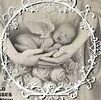If you’re expecting a new baby, getting ready for their arrival is one of the most exciting things you can do! However, it can also be daunting – especially when trying to figure out how many of each size clothing item you need. To help, we’ve broken down the standard number of outfits you should have on hand and included recommendations for items to stock up during the summer and winter, as well as for special occasions.
The basics
A baby needs to be dressed at least once a day and sometimes twice if they’re not sleeping. So having a lot of onesie- and bodysuit-style garments is a good idea, especially in the newborn and infant stages, when you’re adjusting to having your little one make messes at every turn. You may even want to consider purchasing or being gifted some cloth diapers, too, for when you’re on the go and need a quicker, cleaner solution than the traditional paper variety.
To make it easier on parents when changing baby, look for onesies that have snaps at the bottom (sometimes called “all-in-ones”), which are much simpler to undress and can be used as a diaper cover if needed. You can also find rompers that have long sleeves (or short) and enclosed feet, which are similar to onesies but more versatile as they can be worn throughout the day and at night. Some brands even offer a combination of both styles – a dress top half with a romper under section, or just a romper with legs – which are known as “all-in-ones” or “growsuits”.
At home, you’ll likely need onesie-style pajamas that have built-in feet. Often called sleep and play clothes, they’re great for lounging around the house, and can also be paired with a swaddle blanket at bedtime to help keep baby cozy and secure while sleeping. It’s also a good idea to have a couple of sleepers with zip-up or button-up tops, as these are great for baby to wear out and about when you need something quick and easy for frequent diaper changes.
For the colder weather, you’ll need a mix of warmer layers to keep baby comfortable. In addition to long-sleeved shirts and socks, sweaters, and jackets, some manufacturers also produce warm outerwear for babies, such as snowsuits and parkas.
It’s important to remember that babies grow quickly and can outgrow their clothing before you know it. To ensure you’re stocked up on the right size, it’s best to reference a brand’s size chart based on baby’s height and weight rather than their age. This will help you get an accurate fit that won’t be too loose or too tight. It’s also a good idea not to buy too many items in a single size, as babies can outgrow them before you’ve even had a chance to use them. To avoid this, it can be helpful to have a storage bin or two on hand for the items that you don’t end up using, so you can donate them or pass them on to friends and family.
